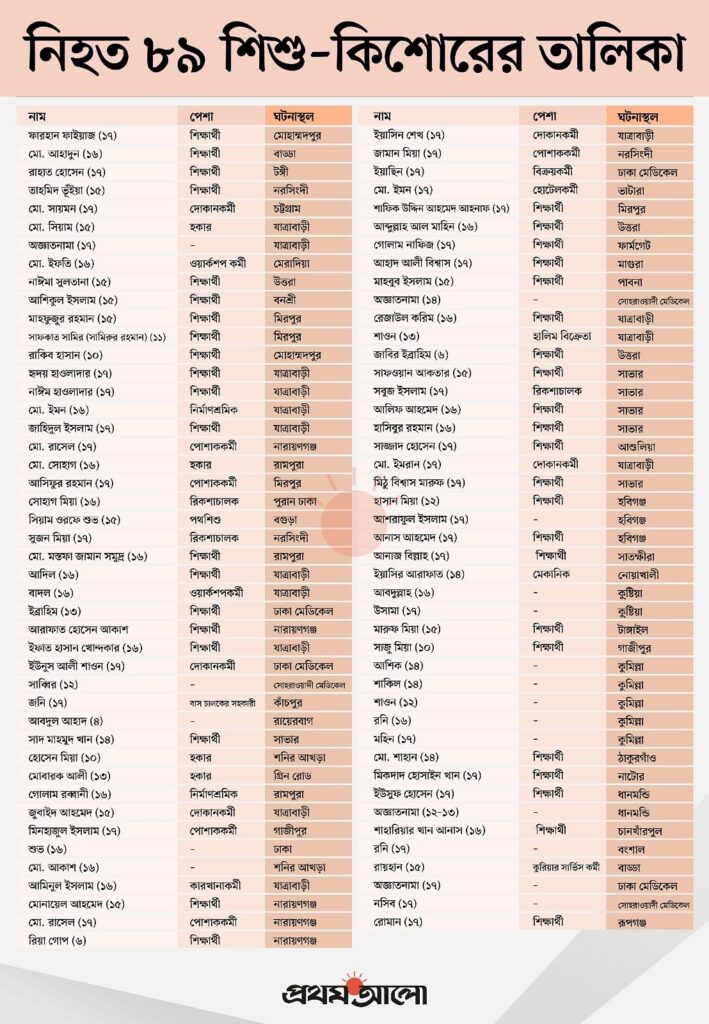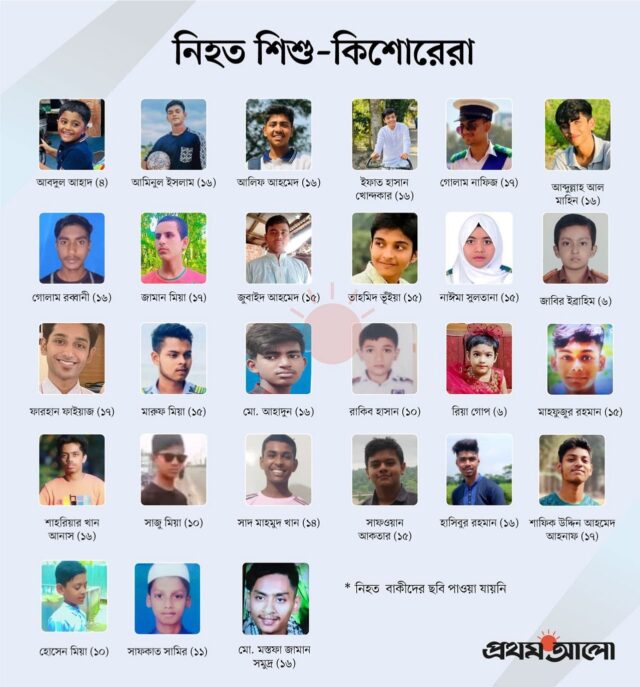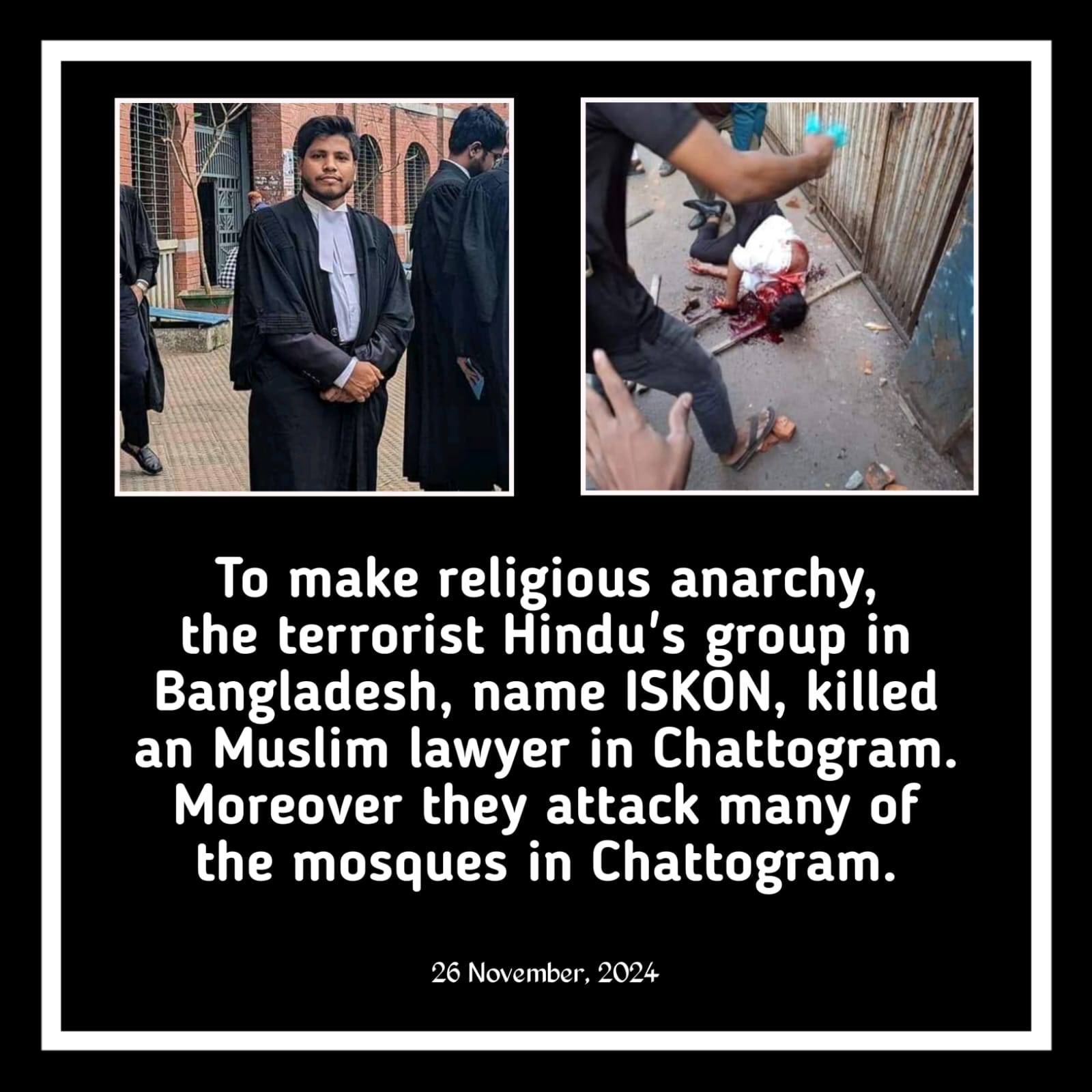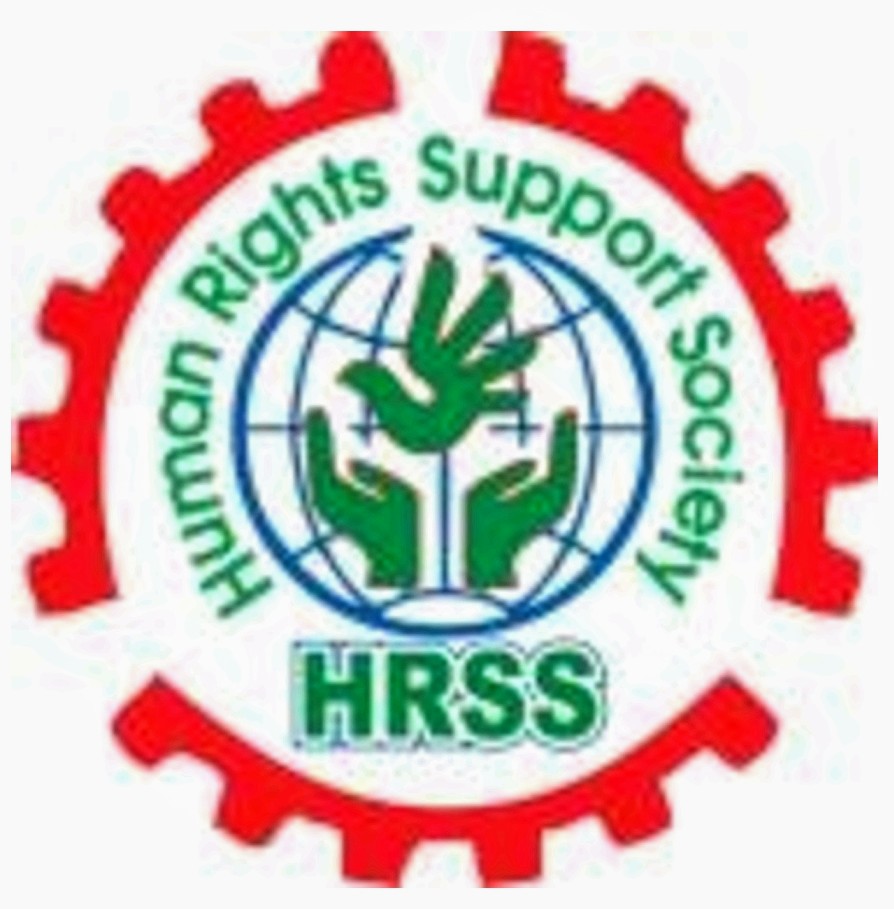The number of children and adolescents killed during the protests demanding reforms in government job quotas and the resignation of the government has risen to at least 89. Previously, a report published on August 18 by Prothom Alo had reported the deaths of 70 children and adolescents.
Among the newly added death cases, some died while undergoing treatment in hospitals, and the deaths of others were reported later. According to Prothom Alo’s records, a total of 758 people died during the student-public uprising and the subsequent period. Among them, 341 died between July 16 and August 3, and 417 died between August 4 and August 24.
The deaths of children and adolescents occurred due to pellet guns and lethal bullets fired by law enforcement agencies to suppress the protests, attacks, and gunfire by members of the Awami League, and arson following the fall of the government.
Most of the deceased adolescents had participated in the protests. However, some children and adolescents were killed while playing at home or on rooftops, watching the protests from their homes, or while participating in victory rallies with their parents.

Shahriar Khan Anas (16), a tenth-grade student at Gandaria Adarsha High School in Old Dhaka, left a letter at home before joining the protest on August 5. In his letter, he wrote, “Mother, I am going to the rally. I can no longer hold myself back. Instead of selfishly sitting at home in fear of death, it is far more noble to die like a hero by taking a bullet in the struggle.” Anas was shot and killed at Chankharpul in the capital on August 5. His father, Saharia Khan, shared the letter with Prothom Alo, saying, “The people of the country should know Anas. What kind of patriotism does one need to prepare like this and leave home?”
Photo Caption: Several people carrying an injured student during the anti-discrimination student movement. August 3 in the Comilla Police Lines area. (File Photo)
In light of the movement for reforming government job quotas and the subsequent protests demanding the resignation of the government, the number of children and adolescents killed has reached at least 89. Earlier, a report published on August 18 by Prothom Alo had reported the deaths of 70 children and adolescents.
Some of those whose deaths were newly added died while receiving treatment in hospitals, while information about the deaths of others was discovered later.
Photo Collage Caption: Collage of deceased children and adolescents: Prothom Alo
According to Prothom Alo, a total of 758 people died during the student-public uprising and the subsequent period. Of these, 341 died between July 16 and August 3, and 417 died between August 4 and August 24. The deaths of children and adolescents occurred due to pellet guns and lethal bullets fired by law enforcement agencies to suppress the protests, attacks, and gunfire by members of the Awami League, and arson following the fall of the government.
Among the deceased adolescents, most had participated in the protests. However, some children and adolescents were killed while playing at home or on rooftops, watching the protests from their homes, or participating in victory rallies with their parents.
Shahriar Khan Anas (16), a tenth-grade student at Gandaria Adarsha High School in Old Dhaka, left a letter at home before joining the protest on August 5. In his letter, he wrote, “Mother, I am going to the rally. I can no longer hold myself back. Instead of selfishly sitting at home in fear of death, it is far more noble to die like a hero by taking a bullet in the struggle.” Anas was shot and killed at Chankharpul in the capital on August 5. His father, Saharia Khan, shared the letter with Prothom Alo, saying, “The people of the country should know Anas. What kind of patriotism does one need to prepare like this and leave home?”
Caption for Photo Collage: List of 89 deceased children and adolescents: Prothom Alo
89% of the deaths due to gunfire
According to the Children’s Act of 2013, individuals under the age of 18 are considered children. An analysis of the deaths reported by Prothom Alo revealed information on 89 children and adolescents. Hospital records and information from relatives show that 79 children and adolescents had marks from pellet guns and lethal bullets on their bodies. Nine children and adolescents died after being burned by fires set on buildings and vehicles. One child’s death resulted from shrapnel from a sound grenade.
Among the deceased children, the youngest was Abdul Ahad (4). He had not yet started school. On July 20, he was shot and killed while watching a protest from the balcony of an eight-story building in Rayerbagh, Dhaka, with his parents. Among the deceased children and adolescents, there were also two girls: Ria Gop (6) from Narayanganj and Naima Sultana (15) from Uttara. Ria was shot and killed while on the roof of her house, and Naima while on a balcony.
Badiul Alam Majumdar, President of the National Girl Child Advocacy Forum and Secretary of Citizens for Good Governance (Sujan), described the killings to suppress public protests as “heinous and crimes against humanity.” He told Prothom Alo that the manner of the killings clearly shows that people were targeted and shot to create fear. He emphasized that these incidents should be classified as crimes against humanity and that those responsible should be severely punished. The government should stand by the families of the deceased and the injured.
More Deaths in Dhaka
The first death occurred on July 16 in connection with the movement for government job quota reforms. On that day, six people died, none of whom were children or adolescents. The first death of a child or adolescent occurred on July 18. From that day until August 4, at least 56 children and adolescents died. On August 5, the Awami League government fell. It is reported that between August 5 and August 11, at least another 33 children and adolescents were killed.
The analysis shows that 57 children and adolescents were killed in Dhaka (including Savar and Tongi). Outside of Dhaka, 32 died. Among the deceased children and adolescents, 42 were students. Twenty-nine children and adolescents were involved in labor, working as shop employees, street vendors, garment workers, construction laborers, or hawkers. The names and identities of four children and adolescents are unknown; their bodies were at Dhaka Medical College and Shaheed Suhrawardy Medical College hospitals. The professions of the remaining 17 children and adolescents are unknown. One child (Ahad) had not started school.
Md. Mostafa Zaman Samudra (16) from Rampura in the capital passed his SSC exam this year. He went to the protest on July 19, where he was shot and killed in the ribcage. His father, Moniruzzaman Tajul, told Prothom Alo that they did not even know that Samudra was participating in the protest. Later, they heard from his friends that Samudra had been going to the protest since July 16. Moniruzzaman said, “Victory has come. My son did not live to see it.”
Urgency for Prioritized Trials
There has never been such a high death toll in any protest or movement in Bangladesh, nor has there been such a loss of children and adolescents.
Senior Supreme Court lawyer Sara Hossain emphasized the need to prioritize the trials of the murders of children and adolescents during the student movement. She told Prothom Alo that many of these incidents were recorded on people’s mobile phones. Many of these videos have already been circulated on the internet. These videos, along with other evidence, witnesses, and information, can prove the killings. She said that instead of leaving it to the bereaved families, the state should file cases based on this evidence immediately, even if only a few. This would increase public trust.
Sara Hossain further stated that if charges are filed only sporadically against those who ordered or influenced the killings at various levels, there is a risk of the cases stalling. However, those who ordered the killings should also not be spared.










